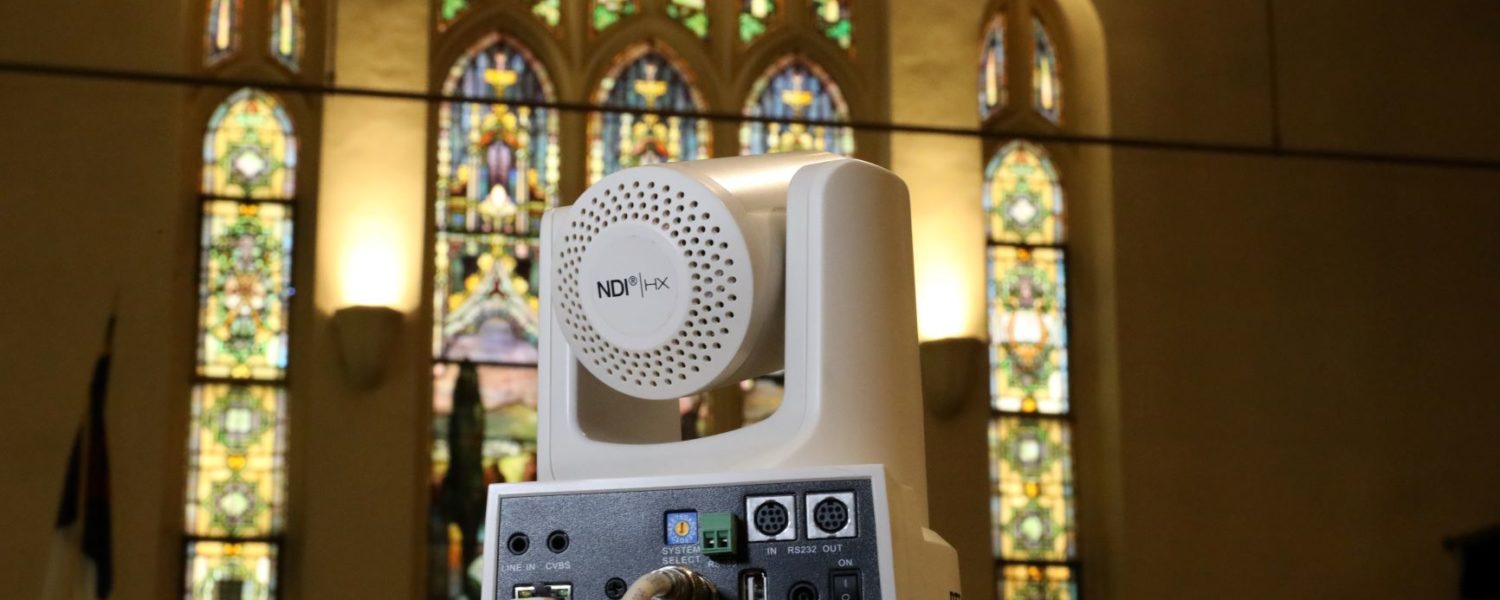By Paul Richards
One of the biggest mistakes that churches make when beginning a live streaming ministry is failing to think about the future. Often, the process of getting a live stream off the ground starts with little to no budget.
Therefore, the first consideration is finding the least expensive options. That is a legitimate concern and one that needs to be considered.
However, spending some time upfront and thinking about future growth can save money and frustration in the future. The ability to scale your worship streaming system will mean that you can improve and expand your existing system without having to start over.
Scalability means the money you spend on starter equipment now won’t go to waste, and there will be less downtime involved in adding new components.
Sound System
When designing a scalable worship streaming system, people often think of video first. That makes sense in the fact that you are getting ready to stream video. However, great video requires excellent sound, so audio is often the best place to start.
Unless you gather in a very small space, your church likely already has an audio system of some sort. If you do, and it works well, there is no need to make any changes at this point.
However, if part of setting up your system involves adding or replacing a sound system, it is highly recommended that you go digital.
Digital mixing consoles, especially those equipped with Dante technology, offer endless flexibility and scalability. Dante (digital audio network through ethernet) allows audio to be easily routed to several locations for different applications. This digital capability will make it easier to make changes both to the live sound in the worship space and the mix being fed to the live stream.
If you are starting with a simple setup, a Dante enabled mixing console will work just like a standard mixer at first. The additional features will become critical in the future as you scale up your system.
Projection and Display
When creating a scalable worship streaming system, it is also essential to consider the people who will be physically present in the worship space. To create a truly scalable system, it is best to ensure that internal and external systems are integrated.
You may be using displays for image magnification (I-mag) so that worshippers have a better view of the preacher and other worship leaders. You may also be using them to display lyrics and other content. Since this type of content is also what you will be sending out to the live stream, these all should work together.
To keep everything integrated and scalable, start by thinking about connections. As display technology gets better and less expensive, it has become relatively normal to replace screens or projectors every few years. That can be an easy change.
However, cabling can be more complicated. If you get the cabling right, you will be able to add or upgrade projectors and displays easily.
It may be tempting to feed your video screens with simple consumer HDMI cables. However, in the long run, you will be better off starting with Serial Digital Interface (SDI) cabling. SDI cables can run up to 300 feet without losing signal. The cables themselves are also designed for long-term use. The wires are sturdier than consumer cables, and the connectors are more secure.
Don’t worry. You don’t have to start with or upgrade to equipment with built-in SDI connections. You can use SDI with consumer HDMI connections by using a converter. As you scale up the system in the future and add more professional components, you will be ready to use the included SDI connections.
Capture / Streaming
In terms of scalability, the decisions you make in terms of capturing and streaming content are critical. Make the right decisions here, and it will be easy to move from a simple, one camera setup, to an expanded multi-camera system without wasting any money on equipment. In terms of scalability, this is probably the area where a little more investment now will save the most in the future.
There are endless options for cameras out there. You can purchase a camera suitable for live streaming from under $300 to tens of thousands of dollars.
The issue with most cameras you might want to consider is the fact that they are designed to have a camera operator present. That may be fine if, at first, you plan to have the camera at the soundboard or have a dedicated spot in the worship space for the camera and operator.
However, as you scale up the system, the first thing you will want to do is add more cameras. That means more operators and more space. Instead, consider starting with a PTZ (pan, tilt, zoom) camera. These cameras take up very little space, can be mounted virtually anywhere, and can be operated via remote control. Using software like Ableton Live, these cameras can be automated and adjust pan, tilt, and zoom in coordination with the worship service.
With all the pieces in place, you will need some way to put it all together and send it out to Facebook, YouTube, or your CDN (content delivery network.) While some churches opt to go with video switchers like the Blackmagic Design ATEM Television Studio, more scalable solutions are software-based.
Cameras can be connected to the computer using a capture device like the Blackmagic Design UltraStudio Mini Recorder. This device will connect to the HDMI or SDI connection on the camera and then to your computer via a USB or Thunderbolt connection.
The other option is to use a camera that will connect via a USB connection such as the PTZOptics 20x Zoom USB Camera. Audio can be captured directly from a digital soundboard or via an audio interface like the Behringer UM2.
Modern software like vMix, eCamm Live, OBS, or Wirecast, can capture all of these signals and give you control over which signals are sent to your live stream and which are routed to your in-house video screens.
When you are looking into video production software consider the option to control your PTZ cameras with the software you select. PTZOptics cameras can be controlled with vMix, Wirecast, xSplit, OBS and Livestream Studio.
When you get a video production software with PTZ camera controls built-in, this makes your volunteers able to perform two jobs with one system. PTZ cameras allow you to have one camera operator for multiple cameras.
But a video production software with PTZ camera controls built-in allow you to have a single volunteer operating the streaming software and the PTZ cameras.
It is also possible to control PTZOptics cameras using a smart phone app for iOS, Android or Kindle. This is a totally wireless way to control cameras and therefore a volunteer can do it from the pews if necessary.
Overflow Displays
Don’t forget that part of the audience viewing your live stream may be right down the hall. A scalable worship streaming system will account for the ability to stream to overflow rooms within the church. Overflow displays are perfect for rapidly growing churches and churches with large crowds for special days like Easter and Christmas or weddings and funerals.
Even if you are not ready to add overflow displays at this point, by creating a scalable worship streaming system, it will be easy to add as many screens as needed whenever you are ready.
Paul Richards is the author of “Helping Your Church Live Stream.” He is the chief streaming officer at StreamGeeks and is also teaches a free online Udemy course call “Helping Your Church Live Stream 2.0.” Richards teaches over 30,000 students on UDEMY on live video production, mobile streaming, and much more, www.PTZOptics.com.












